14 Of The Most Legendary Overclocking-Friendly CPUs
What Makes A CPU Overclocking Legend?
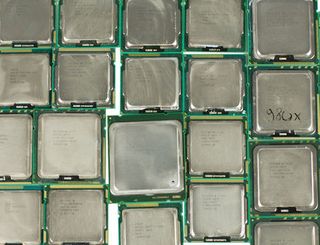
Since the birth of the IBM-compatible PC, a number of processors have distinguished themselves as particularly good candidates for aggressive overclocking. Some models are known for exceptional headroom, while others were popular for how inexpensive they were. We even remember a few unique opportunities to unlock on-chip resources that shipped turned off.
Join us as we travel down memory lane, compiling a list of some of the most notable overclocking processors.
Intel i486
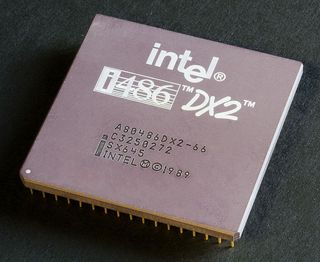
While overclocking was "a thing" before this chip arrived, the scene got a lot more interesting with the introduction of Intel's 80486, thanks to increasingly flexible bus speeds and the first-ever internal clock multiplier in the i486 DX2. Launched in 1992, the DX2 came in three flavors: 40 MHz (20 MHz bus x 2), 50 MHz (25 MHz bus x 2), and 66 MHz (33 MHz bus x 2). Enthusiasts could buy the lower-priced i486DX2-40 and increase the bus speed from 25 to to 33 MHz via a motherboard jumper, resulting in flagship i486DX2-66 performance.
This might not sound like much today, but it represented a 60% overclock when computer manufacturers were paying $600 for the 486DX2-66 in batches of 1000, and CPU upgrade kits could cost well over $1000. The i486DX2-40 and DX2-50 could be found hundreds of dollars cheaper, which made overclocking a very attractive option for enthusiasts.
Intel Pentium 166 MMX
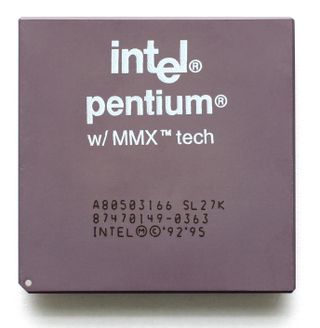
Intel rolled out the Pentium MMX in 1997 with an enhanced instruction set and twice as much L1 cache (a whopping 32 KB) compared to the the first-generation Pentium. Not only were these chips notably faster than their predecessors, but they offered considerable overclocking scalability. Top-of-the-line Pentium MMX 233 processors sold for about $600 when they launched, but the 166 MHz version was $200 cheaper and could usually be overclocked to 233 MHz with little effort. Many of these CPUs were able to hit 250 MHz by setting the front side bus to 83 MHz, making the Pentium MMX 166 a top-tier performer at a reasonable price.
Intel Celeron 300A
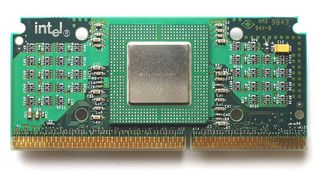
Despite its age, the Celeron 300A is still revered in overclocking circles, and this chip is responsible for introducing a lot of folks to the enthusiast community in 1998 (Ed.: Yours truly included). It was built on the Mendocino core, intended for low-budget use. Intel decided to save costs by placing L2 cache directly on the CPU die instead of adding it to the interface card, as it did with the high-end Pentium II processors. Although the Celeron only included 128 KB of cache to the Pentium II's 512 KB, placing it on-die meant it ran at the processor's clock rate, giving the budget CPU a performance advantage in many situations. Additionally, the $180 Celeron 300A was an incredible overclocker, and increasing its front-side bus to 100 MHz (from the stock 66 MHz) yielded a 450 MHz processor that stood toe-to-toe with the $500 Pentium II 450. For the first time, overclockers could have flagship CPU performance for under $200 with a little tweaking. It's no wonder that the Celeron 300A is fondly remembered by the overclocking community it helped create.
Pentium III 500E
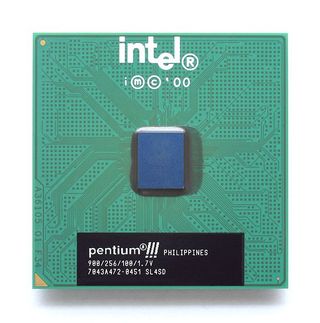
While the Celeron introduced a great many curious techies to overclocking, the Pentium III 500E maintained the movement's momentum. Introduced in 2000, this chip featured a die-shrink to 180 nm and 256 KB of on-die L2 cache, ditching the Slot 1 interface for Socket 370. Unlike the crippled Celerons, the Pentium III 500E ($240 on release) was architecturally identical to the Pentium III 750 MHz ($800). It naturally offered aggressive performance overclocked to 750 MHz through a simple FSB increase to 150 MHz, and came close to the rare and expensive $1000 Pentium III 1 GHz.
Stay on the Cutting Edge
Join the experts who read Tom's Hardware for the inside track on enthusiast PC tech news — and have for over 25 years. We'll send breaking news and in-depth reviews of CPUs, GPUs, AI, maker hardware and more straight to your inbox.
AMD Athlon And Duron 600 (Thunderbird/Spitfire)
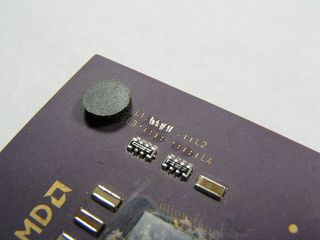
AMD's first-generation Athlon employed a cartridge that dropped into the Slot A interface, and its multiplier could be unlocked with a separate device called a golden finger tool. These processors were great overclockers in their own right, but in 2000, when the next-generation Thunderbird/Spitfire cores arrived in Socket A form, overclocking became a lot easier thanks to the famous L1 bridges.
All that you had to do was connect four little bridges on the CPU package with a pencil (or better yet, a conductive pen) to unlock the clock multiplier. An $80 Duron 600 could be overclocked to the 1 GHz range with nominal effort, coming close to Athlon 950 ($360) performance and pushing enthusiast-class speed under $100.
Similarly, the more expensive Athlons could be taken above 1 GHz at a time when top-tier Intel Pentium IIIs were relatively overpriced, if you could find them: 1 GHz+ Intel models were extremely rare for months after their introduction. Thunderbird's successor, Palomino, made the pencil trick obsolete, but not before the Athlon and Duron drew a lot of overclockers into AMD's sphere of influence.
AMD Athlon XP-M 2500+
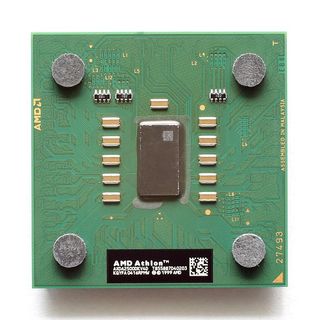
After AMD locked down the multiplier on its desktop CPUs, overclockers realized how much potential the pin-compatible mobile versions offered. For a $25 premium over the desktop CPUs, mobile Barton processors employed a lower stock Vcore (1.45 V) and adjustable ratios. As a result, the Athlon XP-M 2500+ running at 1.83 GHz often made it as high as 2.5 GHz range with moderate tweaking. Some folks even took these processors to 2.7 GHz.
Intel Pentium 4 1.6A
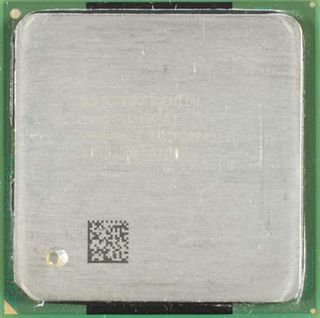
Intel's first Pentium 4 was based on the infamous Willamette core, a design that failed to impress when it launched, and even slid backward in some performance and power measurements. Willamette's successor, Northwood, was released in 2001 with its L2 cache doubled to 512 KB and manufactured on a smaller 130 nm process.
For the first time, enthusiasts started reconsidering their opinions of the Pentium 4 once Northwood started gaining momentum, particularly in light of its improved scalability. The Pentium 4 1.6A sold for about $300 and easily overclocked to 2.4 GHz with the stock cooler. That was quite a bit faster than Intel's $560 Pentium 4 1.8 GHz flagship.
AMD Opteron 144
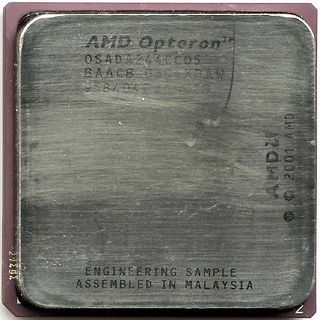
While AMD's Athlon 64 CPUs were great performers, they typically didn't facilitate tons of overclocking headroom compared to the Pentium 4. In 2005, though, AMD released the 1.8 GHz Opteron 144 for under $150. Opterons have always been business-oriented chips destined for servers and workstations, requiring registered memory. However, the 144 was a single-socket variant that dropped into Socket 939-based motherboards employing unbuffered DDR memory. Equally important, it was an incredible overclocker. Many samples were capable of hitting 3 GHz at a time when the highest-end 2.8 GHz Athlon FX-57 sold for $1000.
Intel Pentium D 820 And 805

In 2005, Intel's Pentium family often underperformed AMD's Athlon 64 line-up. So, the company's low-end Pentium D 820 was priced appropriately at $240, about a hundred dollars less than AMD's Athlon 64 X2 4200+.
While the Pentium's stock performance left much to be desired in comparison, it could be pushed hard for a complex dual-core CPU, often achieving 3.8 GHz, with some samples even hitting the 4.0 GHz mark.
In 2006 Intel released the Pentium D 805 for $130, a CPU we overclocked to 4.1 GHz in the article, A 4.1 GHz Dual Core at $130 - Can it be True?. The Pentium D gave Intel enthusiasts something to brag about during an era of AMD dominance.
Pentium Dual Core/Core 2 Duo E2000/E6000/E8000
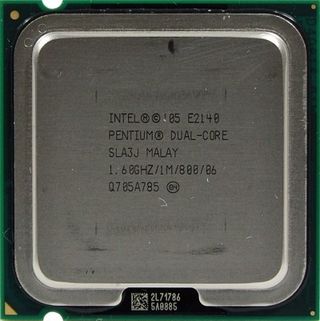
Back in 2006, the introduction of Intel's Core 2 Duo, based on the Conroe design, allowed the company to reclaim the performance crown, simultaneously ushering in a golden age of overclocking. If we dedicated a page to every model in the line-up with exceptional scalability, this story would be at least twice as long.
Let's start with the budget-oriented Pentium Dual Core, essentially a Core 2 Duo with its L2 cache cut to 1 MB. The Pentium Dual Core E2140 (1.6 GHz) and E2160 (1.8 GHz) were selling for $80 and $90 (respectively) on release, and 3.0+ GHz was an easy target. The Core 2 Duo E6300 (1.866 GHz) was less than $200 when it launched, but could be pushed into the 4 GHz range, taking on the $580 Core 2 Duo E6700 (2.667 GHz) flagship.
Later in the Core 2 product cycle, the Wolfdale refresh included a 45 nm die shrink, allowing CPUs like the 3 GHz Core 2 Duo E8400 to break 4 GHz with little resistance. By no means does this covers all of Intel's Core 2 models, but I don't remember any that weren't good overclockers.
-
ltdementhial i had several years ago (2007?) an Pentium 2160 Oce'd all the way up to 3.4Ghz runing on an horrible "PcChips" P17g, later on moved to a C2Q q6600 and was oced to 3.6Ghz this in an Asus P45(?) (dont rememeber the model) both were cooled by an Silent Knight. before the 2160 i had an P4 Extreme Edition that was 2.8 and died on me being oc'd to 3.2 (first and only cpu i have burned ocing) i also had the 720 BE unlocked and oced to 3.8 on a 1.5vCore. (last year i posted some threads about what should i update to) and now im runing an fx 4100 oced to 4.8 cooled by a Noctua NH-D14.Reply
Maybe next year i move to what SR brings.
-
superflykicks03 Oh man I LOVED my Opteron 144 I'm glad she made the list. Could be my favorite CPU of all time. It was the best option to upgrade to a dual core on the 939 platform at the time, and I got it and a 8800 GTS 640 in order to run Crysis with decent settings. The thing I liked most aside from the generous overclocking, and what made this CPU legendary, is that as 939 dual cores became scarce, the price for these skyrocketed on online auction sites, marking the one and only time I made a Prophet on a used CPU.Reply
Pun intended. -
PreferLinux "Although it launched in the $850 range, the Q6600 dropped to $200 by 2010, making it popular with enthusiasts on a budget. By 2011, it was replaced by the Core 2 Quad Q9550, another CPU with a great overclocking reputation."Reply
I think that needs either correction or clarification. I doubt I'm the only one that read it as saying that the Q9550 released in 2011 (it was actually released in March 2008) rather than the probably intended meaning of taking over the budget overclocking CPU position. -
teh_gerbil You're missing the rare hexa core AMD 960t, 4x 3ghz.Reply
Unlockable to 6 cores, and overclockable to 4ghz! -
aggroboy Q6600 depended on if you purchased the correct stepping. I got the inferior stepping which had far less thermal headroom, forcing me to switch CPUs early when it started chugging midway through the current console generation.Reply
Just when i7-920 was feeling slightly dated, game developers started making games more multi-threaded which gave this baby a new lease of life. -
yannigr 1999 (NO idea about overclocking)Reply
Me - OK. I want that board (ΒΧ440) and I also want the Celleron 300A
Seller - With only 2000 more drachmas (6 euros) you can buy the faster 333A.
Me - I don't know, I don't want to spend more money.
Seller - It is worth it. It is faster and the difference in price small.
Me - OK put the 333A then in the order.
Almost 15 years latter I STILL HATE HIM
...lol -
ta152h The king of overclockers was the 286. Implying the internal clock multiplier somehow makes it more overclocker friendly is pretty stupid, as it's got nothing to do with anything.Reply
That was made popular by the first internal cache on x86 processors. Overclocking a chip without an internal cache had poor performance improvement. But, again, that doesn't relate to overclocking. It does relate to the fact that they were reaching a point where it was very difficult to make motherboards handle bus speeds as high as the processors (although Intel would return to that with the original Pentiums, never to return).
The 286 was a more complete overclock, since it increased the speed of everything. If you overclocked the 286 by 33%, everything ran 33% faster, even the system bus. That never happened again. Most implementations of the 386 (and even later releases of the 286) ran the AT-Bus (commonly erroneously called the ISA bus), at 8 or 10 MHz, regardless of CPU speed.
Overclocking the original PC/AT 139 was so common (from 6 Mhz to 8 Mhz), IBM put a timing loop in ROM for the 239 that prevented it. Eventually, the 339 ran at 8 MHz out of the box.
Overclocking these machines often required more skill than modern machines, as you'd have to buy a different crystal, desolder the old one, and solder the new one in. If the memory chips were close to timing, they'd have to come out too. Luckily, most were not soldered in. IBM's had a perverse piggybacked arrangement though, where they would put one 64K chip right on top of another, and they were soldered together. It looked horrible, but somehow worked like a 128Kb chip (which there never was, they went from 16K to 64K to 256K).
Leaving out the 286 is silly. It was really the first one commonly overclocked (I never hard of anyone overclocking an 8088, but someone probably did), and actually forced the largest computer company in the world to put in safeguards around it to prevent it. As strange as it sounds, my original 8 MHz Tandy 3000 showed a nice improvement going to 10 MHz. One SCSI card didn't like the faster bus, but everything else was fine. Adding in a zero wait state memory card from Cheetah also dramatically improved performance.
Even the 386 was commonly overclocked, and there were a lot of scandals because companies would buy lower clocked 386s from Intel, get rid of the silk screen, and than overclock them in the machines they would sell, without telling anyone. What a mess that was ... -
PreferLinux Reply
Hence why they started locking the multipliers...11186936 said:Even the 386 was commonly overclocked, and there were a lot of scandals because companies would buy lower clocked 386s from Intel, get rid of the silk screen, and than overclock them in the machines they would sell, without telling anyone. What a mess that was ...
Most Popular



